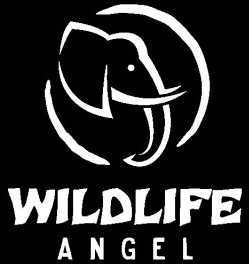In this Saturday, April 30, 2016, Kenya is preparing for an event concerning the global conservation community to fight against poaching and illegal ivory trafficking. Uhuru Kenyatta, Kenya’s president, decided to burn nearly 105 tons of ivory from stockpiles of the country.
Elephant poaching
Before going into the details of the operation and to focus on the consequences of such an act, we have to place the context and status of elephant populations in Africa. Their number was 1,2 million in the early 80s when we estimates it at less than 450,000 today, provided that those numbers are approximations.
At present, we denounce about 30 to 35,000 illegal poaching each year, making it one elephant slaughtered for their ivory every 15 minutes!
The population decreases at high speed and some scientists even suggest the possibility of extinction in the wild within the next ten to fifteen years. But the complexity of the situation forces us to get out of this macroscopic vision to go into more detail, taking into account regional differences.
In Central Africa, the elephant is considered endangered severe, it means with a high risk of extinction in the short term. In East Africa (Kenya and Tanzania) and the West (Niger, Burkina Faso, Ivory Coast, Benin, …), it is vulnerable according to the official text, that is to say, with possible risk of extinction medium term. As for Southern Africa (South Africa, Botswana, Namibia and Zimbabwe), the concern is minor because elephants are considered abundant and population increases mainly in Botswana and Namibia somewhat. This is also why the CITES said elephants in Annex 1 for all of Africa, except for the 4 countries mentioned in southern Africa, which cringe many detractors worldwide. The classified in Appendix 2 allows trade in animal parts (fenders among others) but under certain conditions.
How to combat poaching?
That said, today Kenya is announcing it will burn 105 tonnes of elephant tusks seized from his stock; it is a continuation of his previous operation launched in March 2015, with a much smaller amount. It is the Government’s Kenyatta and Gabon and Ugandan presidents invited to the “ceremony”, created in day an act of strong commitment to the war against the illegal trafficking of ivory and poaching.
I remind simply that the country has already made in the past to such an operation; it was less publicized, the amount of defenses was less and that was in 1989. A similar operation had also been reproduced in 2011.
Given the lack of results, Kenyan policymakers at the time had decided, in agreement with CITES, in reverse and drive down the price of ivory selling controlled seizure of tusks on the market . In 1997 and 2007, large quantities of ivory had been circulated officially. These communication activities have had no consequence and populations of killing curves were not inflected: these operations had no effect!
Some figures indicate that Tanzania and Mozambique have lost half of their elephant numbers in twenty years. And what of Kenya which has lost more than three quarters?
This is a great marketing move to show the international public opinion that Kenya can react. The world has been shaken by successive reverses of all African countries in their fight against poaching and organized crime, in their poor performance to decrease the corruption that plagues the institutions of the countries concerned, and by conveyed abominable stories, amplified by social networks like those of Cecil lions in Zimbabwe and Mohawk in Kenya.
We had to react, make noise, show that we are determined. What a beautiful sight that these defenses mountains sacrificed on the altar of greed! The determination is precisely what is lacking in African governments to take resolute head on the fight against wildlife trafficking.



